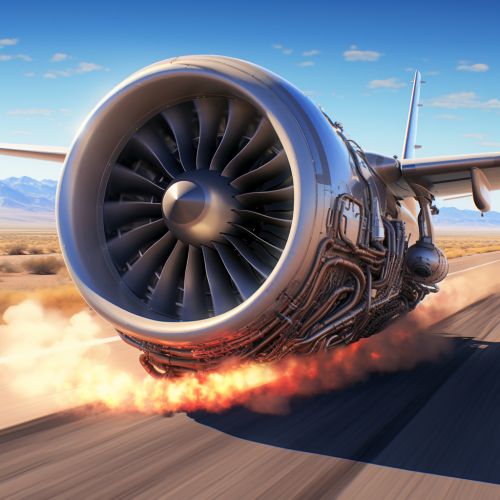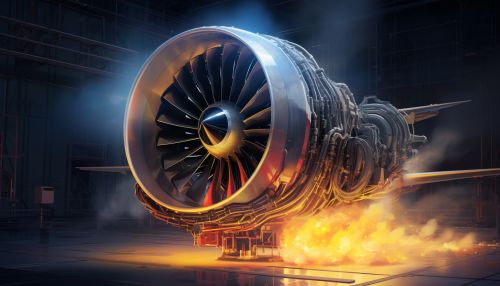Jet Engine
Introduction
A jet engine is a type of reaction engine that discharges a fast-moving jet of fluid to generate thrust in accordance with Newton's third law of motion. This broad definition of jet engines includes turbojets, turbofans, rockets, ramjets, and pulse jets. In general, jet engines are combustion engines.
History
The concept of the jet engine dates back to the invention of the aeolipile before the first century AD. This device directed steam power through two nozzles to cause a sphere to spin rapidly on its axis. It was not used for delivering power to a useful work, but was seen by engineers as a scientific novelty.
Principle of Operation
Jet engines operate according to the principle of jet propulsion, specifically, they accelerate a mass of air or other gas. The engine sucks air in at the front with a fan. A compressor raises the pressure of the air. The compressor is made with many blades attached to a shaft. The blades spin at high speed and compress or squeeze the air. The compressed air is then sprayed with fuel and an electric spark lights the mixture. The burning gases expand and blast out through the nozzle, at the back of the engine. As the jets of gas shoot backward, the engine and the aircraft are thrust forward.
Types of Jet Engines
There are several different types of jet engines, each with their own advantages and disadvantages.
Turbojet
The turbojet is an airbreathing jet engine, typically used in aircraft. It consists of a gas turbine with a propelling nozzle. The gas turbine has an air inlet, a compressor, a combustion chamber, and a turbine. The compressed air from the compressor is heated by the fuel in the combustion chamber and then allowed to expand through the turbine. The turbine powers the compressor. The hot exhaust gases provide thrust when jetted out through the nozzle.
Turbofan
A turbofan engine is a type of jet engine, similar in principle to a turbojet, but with an additional fan at the front of the engine which provides thrust in addition to that provided by the jet. Turbofans are more efficient than turbojets at subsonic speeds and are quieter, due to the slower exhaust speed.
Ramjet
A ramjet is a form of jet engine that contains no major moving parts and can be particularly useful in applications requiring a small and simple engine for high speed use, such as with missiles. Ramjets require forward motion before they can generate thrust and so are often used in conjunction with other forms of propulsion, or with an external means of achieving sufficient speed.
Pulse Jet
A pulse jet engine is a type of jet engine in which combustion occurs in pulses. Pulsejet engines can be made with few or no moving parts, and are capable of running statically.
Applications
Jet engines have a wide range of applications, including:
- Aircraft propulsion: The most common use of jet engines is for aircraft propulsion. In this application, the engine produces a high-speed exhaust, which generates thrust to propel an aircraft.
- Rocket propulsion: Rocket engines are a type of jet engine that use rocket propellant to produce a high-speed exhaust. This type of engine is used for space travel and missile propulsion.
- Marine propulsion: Jet engines are also used in some types of high-speed marine transport, such as jet skis and hovercraft.
- Power generation: Some types of jet engines, such as gas turbines, are used to generate electricity in power plants.
See Also


